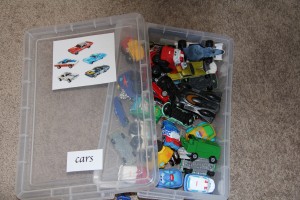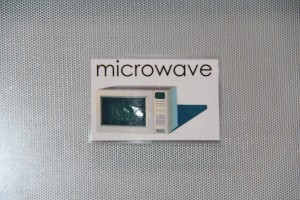Play: Early Literacy in Young Children
Being a former teacher of children in the pre-reading and early reading stages, letter recognition and early literacy skills are pretty important in my family and professional life.
Here are a couple really simple ideas to introduce letters and letter sounds to young children (and remember, there is no such thing as too young!)
Labeling:

Sort toys of one type (cars or dolls, for example) and put them in a bin labeled with the word for them, as well as a photo. You can simply print these off and use packing tape or other clear adhesive, to cover them and keep them from being peeled off. Alternatively, laminate your labels so they can be easily moved or reused.
Label common ite ms, areas, and objects around the house. People often appear perplexed when they see these all over at our place….their teasing ceases when they realize our 2 year old can identify the words.
ms, areas, and objects around the house. People often appear perplexed when they see these all over at our place….their teasing ceases when they realize our 2 year old can identify the words.
Letters and Letter Sounds:
In my work with early readers, I realized it made more sense to identify letters phonetically FIRST rather than teaching children the letter names. After all, D doesn’t sound out as “Dee”, just as W doesn’t ever say “Doubleyou”. It seemed more helpful to learn that W is “wuh” and D is “duh” (loosely of course) and then to worry about letter names later on.
When children begin to point to letters or recognize them, label them verbally just as you would tell them the name of car or bus if they showed it to you. There is no need to sit and ‘test’ or pressure them with identifying anything; you can simply make it part of every day life to point out letters, sounds and numbers, just as you do with the names of objects.
The aisles at the store are a great place to play number games!
Flash Cards:
Make these, laminate them, and hole punch them to affix together with a ring. Again, there is no need to sit at the table and force-feed this (unless your child likes that kind of thing!), but just have them in your toy box. Then, don’t be surprised to find your toddler thumbing through and exploring them, and eventually bringing them to you with ‘questions’ or looking for direction.
This is an uppercase set that I made and used in my classroom; our two year old son now plays with them and LOVES to go through them with us.
Tip:
Introduce lowercase letters before uppercase, as they are more commonly used.
LIVE WELL!



